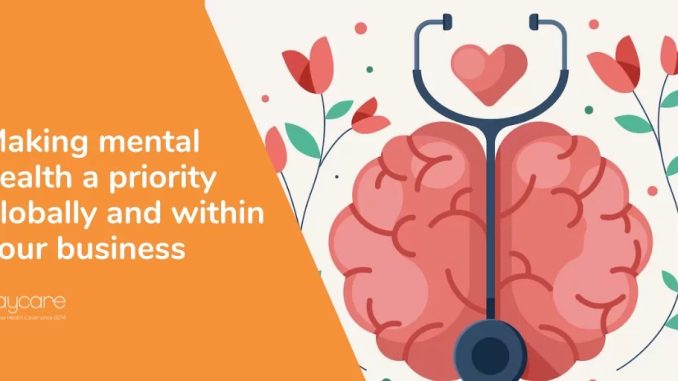
Making mental health a priority rather than an option is no longer a fringe idea—it’s a necessity. In today’s business landscape, where agility, innovation, and resilience are prized, overlooking mental well-being is a strategic misstep. The traditional separation between personal health and professional performance has blurred, and organizations are beginning to understand that mental health is not just a human issue—it’s a business imperative. When employees are mentally well, they think more clearly, collaborate more effectively, and adapt more readily to change. Conversely, when mental health is neglected, productivity suffers, engagement declines, and turnover increases. The cost of ignoring mental health is not just emotional—it’s economic.
The challenge lies in shifting from reactive support to proactive care. Too often, mental health is addressed only when a crisis emerges—a burnout episode, a breakdown, or a resignation. By then, the damage has already been done. Making mental health a priority means embedding it into the fabric of daily operations. It means creating environments where psychological safety is as valued as physical safety, and where conversations about stress, anxiety, and emotional resilience are normalized rather than stigmatized. This shift requires leadership buy-in, cultural alignment, and a willingness to rethink how success is measured. It’s not just about hitting targets—it’s about sustaining the people who make those targets possible.
One of the most effective ways to prioritize mental health is through intentional design. Workplaces can be structured to support well-being, from flexible schedules and manageable workloads to spaces that encourage rest and reflection. These aren’t perks—they’re foundational elements of a healthy organization. When employees have the autonomy to manage their energy, the support to navigate challenges, and the tools to build resilience, they’re more likely to thrive. And thriving employees don’t just perform better—they contribute to a culture of trust, creativity, and growth. This kind of culture doesn’t happen by accident. It’s the result of deliberate choices and consistent reinforcement.
Education plays a critical role in this transformation. Many people still carry outdated beliefs about mental health—that it’s a personal weakness, a private matter, or a distraction from work. These myths perpetuate silence and prevent people from seeking help. By offering training, resources, and open dialogue, organizations can dismantle these barriers. Leaders can model vulnerability by sharing their own experiences, and teams can build empathy by listening without judgment. The goal is not to turn every employee into a therapist—it’s to foster understanding and connection. When people feel seen and supported, they’re more likely to engage, contribute, and stay.
Technology can also enhance mental health efforts, but it must be used thoughtfully. Apps that track mood, offer mindfulness exercises, or connect users to counselors can be valuable tools. However, they’re not substitutes for human connection. Digital solutions should complement, not replace, interpersonal support. The most effective programs combine tech-enabled access with real-world empathy. For example, a company might offer virtual therapy sessions alongside peer support groups or wellness check-ins. This hybrid approach ensures that mental health care is accessible, personalized, and grounded in relationship.
Making mental health a priority also means recognizing its intersection with other aspects of identity and experience. Not everyone faces the same challenges, and support must be inclusive. Cultural background, gender identity, socioeconomic status, and personal history all influence how individuals experience and express mental health. A one-size-fits-all approach is not only ineffective—it’s exclusionary. Organizations must listen actively, adapt resources, and ensure that every employee feels safe and respected. This commitment to equity strengthens the entire system. It builds trust, reduces disparities, and promotes a sense of belonging.
The return on investment for prioritizing mental health is substantial. Studies consistently show that companies with robust mental health programs see lower absenteeism, higher engagement, and improved retention. But beyond the metrics, there’s a deeper value. When mental health is treated as essential, people feel empowered to bring their whole selves to work. They’re not hiding behind masks or pushing through pain—they’re contributing authentically. This authenticity fuels innovation, strengthens relationships, and drives sustainable success. It’s not just good for business—it’s good for humanity.
Ultimately, making mental health a priority is about leadership. It’s about choosing to care, to listen, and to act. It’s about recognizing that behind every role, every title, and every task is a person with hopes, fears, and needs. When organizations embrace this truth, they create environments where people don’t just survive—they flourish. And in a world that demands constant adaptation, that kind of flourishing is the most valuable asset of all.